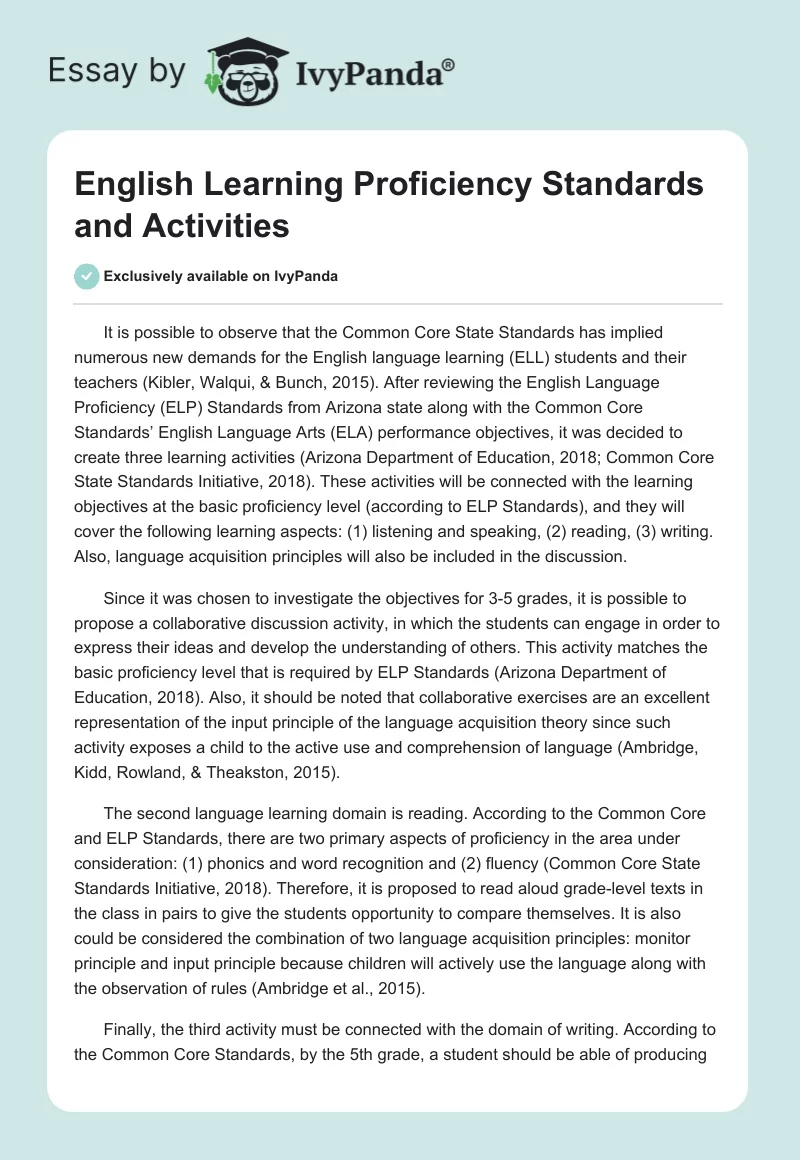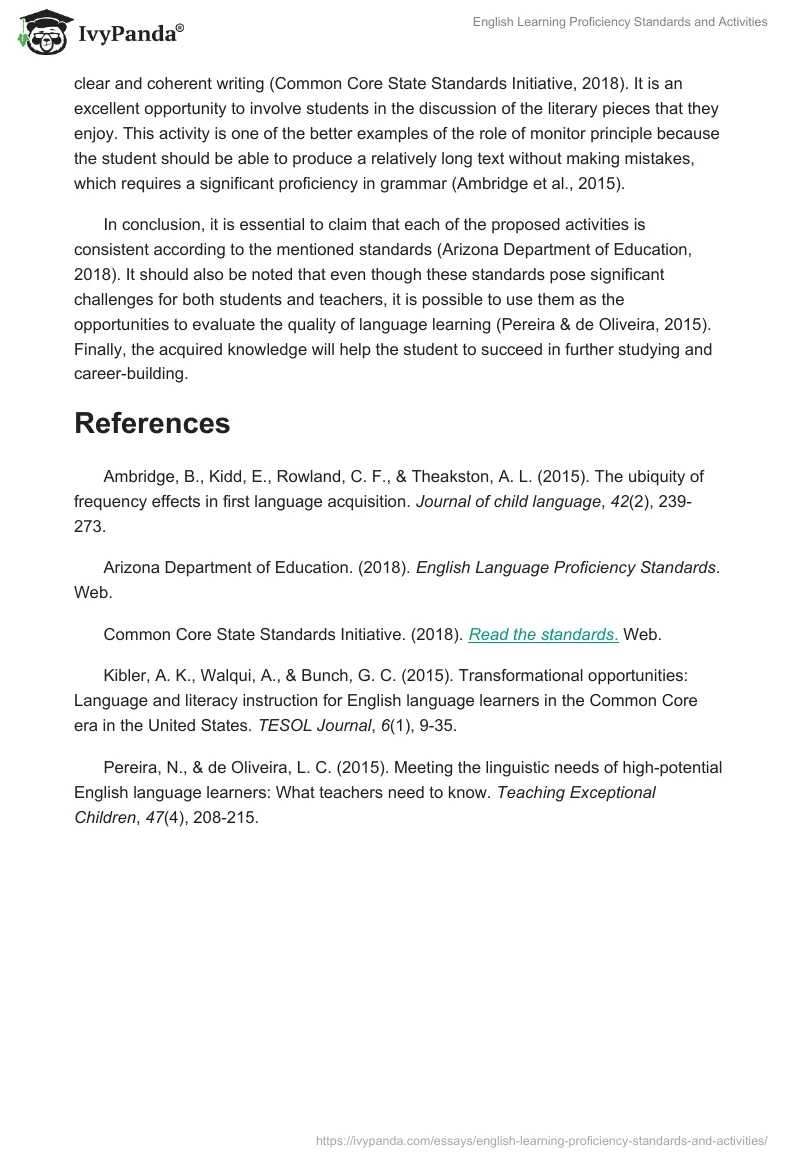It is possible to observe that the Common Core State Standards has implied numerous new demands for the English language learning (ELL) students and their teachers (Kibler, Walqui, & Bunch, 2015). After reviewing the English Language Proficiency (ELP) Standards from Arizona state along with the Common Core Standards’ English Language Arts (ELA) performance objectives, it was decided to create three learning activities (Arizona Department of Education, 2018; Common Core State Standards Initiative, 2018). These activities will be connected with the learning objectives at the basic proficiency level (according to ELP Standards), and they will cover the following learning aspects:
- listening and speaking,
- reading,
- writing.
Also, language acquisition principles will also be included in the discussion.
Since it was chosen to investigate the objectives for 3-5 grades, it is possible to propose a collaborative discussion activity, in which the students can engage in order to express their ideas and develop the understanding of others. This activity matches the basic proficiency level that is required by ELP Standards (Arizona Department of Education, 2018). Also, it should be noted that collaborative exercises are an excellent representation of the input principle of the language acquisition theory since such activity exposes a child to the active use and comprehension of language (Ambridge, Kidd, Rowland, & Theakston, 2015).
The second language learning domain is reading. According to the Common Core and ELP Standards, there are two primary aspects of proficiency in the area under consideration:
- phonics and word recognition and
- fluency (Common Core State Standards Initiative, 2018).
Therefore, it is proposed to read aloud grade-level texts in the class in pairs to give the students opportunity to compare themselves. It is also could be considered the combination of two language acquisition principles: monitor principle and input principle because children will actively use the language along with the observation of rules (Ambridge et al., 2015).
Finally, the third activity must be connected with the domain of writing. According to the Common Core Standards, by the 5th grade, a student should be able of producing clear and coherent writing (Common Core State Standards Initiative, 2018). It is an excellent opportunity to involve students in the discussion of the literary pieces that they enjoy. This activity is one of the better examples of the role of monitor principle because the student should be able to produce a relatively long text without making mistakes, which requires a significant proficiency in grammar (Ambridge et al., 2015).
In conclusion, it is essential to claim that each of the proposed activities is consistent according to the mentioned standards (Arizona Department of Education, 2018). It should also be noted that even though these standards pose significant challenges for both students and teachers, it is possible to use them as the opportunities to evaluate the quality of language learning (Pereira & de Oliveira, 2015). Finally, the acquired knowledge will help the student to succeed in further studying and career-building.
References
Ambridge, B., Kidd, E., Rowland, C. F., & Theakston, A. L. (2015). The ubiquity of frequency effects in first language acquisition. Journal of child language, 42(2), 239-273.
Arizona Department of Education. (2018). English Language Proficiency Standards. Web.
Common Core State Standards Initiative. (2018). Read the standards. Web.
Kibler, A. K., Walqui, A., & Bunch, G. C. (2015). Transformational opportunities: Language and literacy instruction for English language learners in the Common Core era in the United States. TESOL Journal, 6(1), 9-35.
Pereira, N., & de Oliveira, L. C. (2015). Meeting the linguistic needs of high-potential English language learners: What teachers need to know. Teaching Exceptional Children, 47(4), 208-215.


